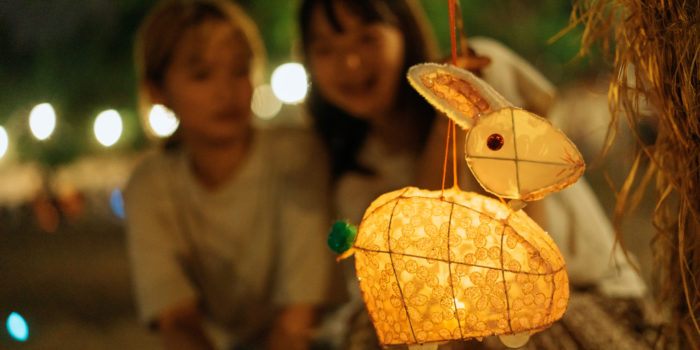
Among many East and Southeast Asian cultures, Lunar New Year is one of the year’s biggest and most anticipated celebrations. With festivities spanning multiple days – beginning this year on January 22nd – Lunar New Year marks a time for gathering (and feasting) with loved ones and honoring ancestors and heavenly deities. And this year, we’re celebrating a little louder because it’s the Year of the Rabbit, which – as the Zodiac predicts – promises to be a lucky one!
For a brief refresher on the story behind the animals of the Chinese zodiac, check out this blog post.
The Year of the Rabbit is said to be a year of hope, largely because the rabbit is associated with peace, prosperity, and longevity in Asia. In Chinese culture, the rabbit is the luckiest of the 12 animals of the zodiac, symbolizing energy, elegance, and beauty, while Korean folk tales present the rabbit as quiet, clever, fertile and prosperous. Across cultures, the Year of the Rabbit is expected to promote strengthened bonds with loved ones and expanded connections with friends, family and colleagues.
Lunar New Year is celebrated widely in China, Korea, Mongolia, Tibet, and Vietnam. But since so many people with origins from these countries live in the diaspora, this holiday is celebrated with a mix of rooted, ancestral traditions and local influences of adopted countries.
In the United States, celebrations are usually condensed into a weekend or a day or two because people are not able to take extended time off. For my Chinese-American family, Lunar New Year has become a multifaceted celebration infused with many new cultures. My friends and I bring in our own family traditions and make new multiethnic traditions. Lunar New Year is an opportunity for us to honor our ancestors, express gratitude for the abundance we have been given, and bring in the new year with family and friends.
How is Lunar New Year traditionally celebrated?
Not unlike my family, every culture has its traditions for ringing in the New Year. In Hong Kong, a common practice is thoroughly cleaning and decorating the house before the first day of the Lunar New Year, ridding the home of inauspicious spirits collected over the old year. Colorful red and gold banners and couplets are displayed with messages of good fortune, good health and good luck. Many families will buy a live mandarin orange tree to welcome wealth, luck, and prosperity. These trees also signify spring, renewal and new beginnings.
Exchanging gifts and new year greetings with family members is a common practice. Typically, elders will dole out red envelopes with money (crisp, clean bills are often a requirement) as a sign of good luck and prosperity. Firecrackers, fireworks, and lion dances are also part of the celebrations to usher in a fresh start and ward off bad spirits.
Unsurprisingly, food is a central part of the celebration; a mix of hearty and delicately prepared treats that delight the eyes and warm the heart. Most foods that are eaten have a symbolic meaning, most generally representing prosperity and abundance. Dumplings and spring rolls for wealth. Glutinous rice cakes symbolize attaining new heights. Sweet rice balls are associated with reunion and family togetherness. Noodles for longevity. Fruits such as pomelo, tangerines, and oranges symbolize success and achievement.
Vietnamese people celebrate Tết by making and eating bánh chưng and bánh tét: sticky rice cakes filled with mung bean and pork. The sweet or savory cakes are wrapped in dong leaves or (banana leaves as a substitute) and symbolize humility and resourcefulness. Bánh chưng are square in shape representing the earth, and bánh tét are cylindrical, representing the sky.
Koreans celebrate Seollal by making and eating tteokguk – a rice cake soup with julienned eggs, seaweed, meat and sesame oil. Eating the white tteok or rice cake, which signifies purity and cleanliness, is part of the ritual to start the New Year with good fortune.
These are just some of the traditions our communities practice – there are, of course, many more. And therein lies the beauty of holidays; the freedom to make them your own however your journey unfolds. So wherever in the world you’re celebrating, whomever you’re gathering with, and whatever decadent treats you’ll be serving, we wish you an abundantly lucky Year of the Rabbit.
Thanks to Jeffrey Tsang from Michigan State University for his descriptions of celebrations in Vietnam and Korea.